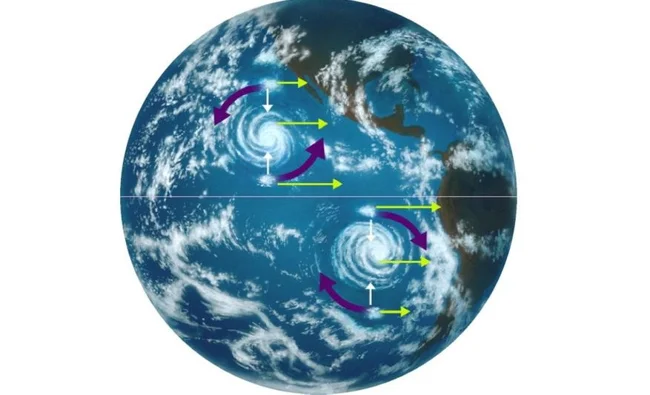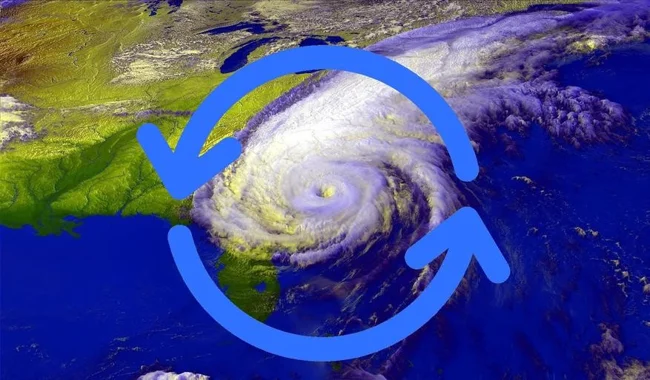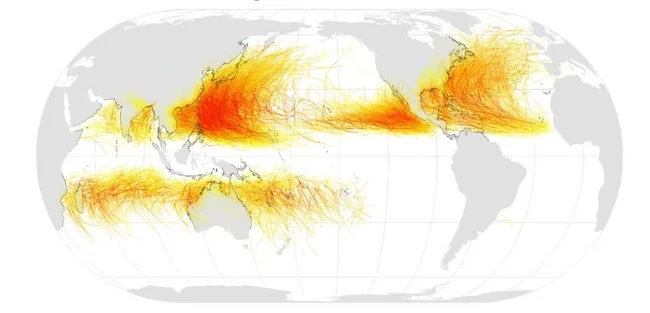Why can't a single hurricane cross the equator? (5 photos)
When Hurricanes Helen and Milton hit the southeastern United States, the Internet began to claim that no hurricane had ever crossed the equator. 
Hurricanes, like any other objects, are subject to the laws of physics. If the Earth did not rotate, the air masses in a hurricane would move in a straight line. But since the Earth rotates, the air masses rising and falling in a hurricane are affected by the Coriolis force (effect) - the force of inertia that deflects the body's motion in rotating systems from a straight line. 
Coriolis Effect
This force makes hurricanes spiral and rotate. And it is "thanks" to the Coriolis force that hurricanes in different hemispheres of the Earth rotate in different directions. Hurricanes that originate in the Northern Hemisphere begin to rotate and twist counterclockwise. 
Hurricane in the Northern Hemisphere
If a hurricane originates in the Southern Hemisphere, it begins to rotate clockwise. 
Hurricane in the Southern Hemisphere
What happens if two hurricanes meet and are close? Will one, the "stronger" one, swallow the other? No! They will rotate around each other without merging. Physics again. This "phenomenon" is called the Fujiwara effect.
For a hurricane, for example, to cross the equator and move from the Southern to the Northern Hemisphere, it will have to change the direction of rotation, i.e. stop rotating clockwise and start rotating counterclockwise. And such a development of events in the real world is simply impossible. It is because of the Coriolis force, caused by the rotation of the Earth, that no hurricane can cross the equator. This is why there are no hurricanes near the equator. This is why the vast majority of hurricanes are born, formed, move and "live" at a distance of at least three hundred kilometers from the equator. 
And if a hurricane was “born” in one of the hemispheres, then it is destined to “die” in the same hemisphere.























